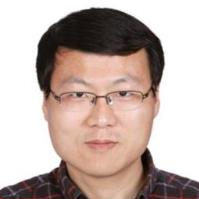Frequency Control of AC/DC Hybrid Power Grid considering Large-Scale New Energy Integration
A special issue of Energies (ISSN 1996-1073). This special issue belongs to the section "A1: Smart Grids and Microgrids".
Deadline for manuscript submissions: closed (31 March 2022) | Viewed by 4132
Special Issue Editors
Interests: new energy power system operation and control; power system dispatching automation; power system economic dispatching
Interests: modeling; control; and stability analysis of power systems with renewable energy
Interests: power system control; power system optimization; power market
Special Issues, Collections and Topics in MDPI journals
Special Issue Information
Dear Colleagues,
New energy, represented by wind power and photovoltaic power, has been integrated into the power grid on a large scale. At the same time, with the approach of carbon balance targets, distributed new energy and offshore wind power are also developing rapidly. The integration of large-scale new energy is changing the traditional transmission mode and power grid structure, such as in the examples of LCC-HVDC, VSC-HVDC, AC/DC hybrid interconnection, and asynchronous interconnection, among others. This brings many new challenges regarding the frequency control in power systems, including the strong volatility and uncertainty of new energy, the lack of flexibility of the system, the reduction in power system inertia, the addition of new energy, energy storage, and HVDC as new frequency modulation resources, and cooperative scheduling control among HVDC interconnection areas.
To address these challenges, this Special Issue sincerely invites scholars to submit manuscripts detailing their latest research and welcomes reviews about local frequency control of new energy units or energy storage, the frequency control of the regional control center, and multi-area frequency coordination control between AC/DC hybrid interconnection areas. Any technologies, methods, or comments on the latest research in this field that can improve the frequency modulation capability or frequency stability of AC/DC hybrid systems with large-scale new energy integration are within the scope of this issue.
Prof. Dr. Haibo Zhang
Prof. Dr. Dawei Zhao
Prof. Dr. Kaifeng Zhang
Guest Editors
Manuscript Submission Information
Manuscripts should be submitted online at www.mdpi.com by registering and logging in to this website. Once you are registered, click here to go to the submission form. Manuscripts can be submitted until the deadline. All submissions that pass pre-check are peer-reviewed. Accepted papers will be published continuously in the journal (as soon as accepted) and will be listed together on the special issue website. Research articles, review articles as well as short communications are invited. For planned papers, a title and short abstract (about 100 words) can be sent to the Editorial Office for announcement on this website.
Submitted manuscripts should not have been published previously, nor be under consideration for publication elsewhere (except conference proceedings papers). All manuscripts are thoroughly refereed through a single-blind peer-review process. A guide for authors and other relevant information for submission of manuscripts is available on the Instructions for Authors page. Energies is an international peer-reviewed open access semimonthly journal published by MDPI.
Please visit the Instructions for Authors page before submitting a manuscript. The Article Processing Charge (APC) for publication in this open access journal is 2600 CHF (Swiss Francs). Submitted papers should be well formatted and use good English. Authors may use MDPI's English editing service prior to publication or during author revisions.
Keywords
- Performance analysis and modeling of new energy, energy storage or HVDC involved in frequency regulation
- Primary frequency control considering new energy, energy storage, or HVDC regulation
- Automatic generation control considering new energy, energy storage, or HVDC regulation
- Unit commitment and economic dispatch considering new energy, energy storage, or HVDC regulation
- Coordination control and optimal scheduling between AC/DC hybrid interconnection areas
- Virtual synchronous generator control for new energy or energy storage
- Research on virtual power plant, demand response, or other technology which is involved in frequency regulation







